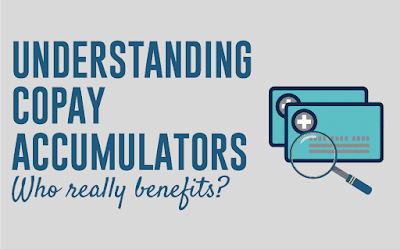By: Ranier Simons, ADAP Blog Guest Contributor
An important legal decision produced a financial win for patients on medication affordability. On September 29, 2023, U.S. District Court Judge John D. Bates struck down a federal rule left over from the Trump Administration that previously allowed broad use of copay accumulators by insurance companies, which shifted more cost-sharing to patients. For a detailed explanation of copay accumulators, please view a previous ADAP Advocacy blog post on the subject here.
 |
| Photo Source: National Infusion Center Association |
Copay accumulators, in essence, allow insurers to ‘double-dip’, maximizing profits while increasing financial burdens for patients. The accumulators allow insurers to refrain from applying drug manufacturer copay assistance payments to patients’ deductibles and out-of-pocket costs. Under copay accumulator policies, insurers pay less for medications by prolonging the cost-sharing time period before they are responsible for 100 percent of a medication’s cost.
The Trump-era rule is officially known as the U.S. Department of Health and Human Services (HHS) Notice of Benefit and Payment Parameters for 2021 (NBPP).[1] The HIV+Hepatitis Policy Institute, Diabetes Leadership Council, Diabetes Patient Advocacy Coalition, and three patients sued HHS over the rule. The win means that insurance companies must now abide by the federal rule that controlled 2020 health plans. Thus, copay accumulator programs are only allowed to be used for brand-name drugs that have generic equivalents.[1] According to a report issued by IQVIA, manufacturer copay assistance in 2022 was almost $19 billion.[2] This means insurers previously received billions in payments provided by manufacturers in addition to the overage they were predatorily siphoning directly from patients.
The flawed federal rule allowed insurance companies to arbitrarily decide if copay assistance programs were considered a type of cost-sharing. This was based on contradictory interpretations of the law and problematic ambiguities of its language. Copay assistance should indeed be regarded as cost-sharing, given the rule states cost-sharing is “any expenditure required by or on behalf of an enrollee.”[1] Striking down the rule removes any ambiguity mandating that patients can go back to applying copay assistance payments towards deductibles and out-of-pocket maximums, thus significantly lowering their financial burden for high-cost medications.
 |
| Photo Source: National Bleeding Disorders Foundation |
Health insurance policy and drug benefit design can be a bridge or a barrier to effective and optimal access to life-saving medications. High out-of-pocket costs for patients often result in medicine abandonment, poor medication adherence, or even failure to initiate necessary treatment.[3] Patients affected by copay accumulators are 1.5 times less likely to fill their prescriptions than those in high-deductible plans.[4]
The legal decision is a significant win. However, it must be aggressively and effectively enforced. The representatives of HHS attempted to use convoluted and flawed arguments to explain why copay accumulators were good for patients and how they somehow forced manufacturers to lower prices. The judge refuted their arguments, but he remanded to HHS in the event it should decide to offer new arguments concerning the legality of copay accumulators under the Affordable Care Act.[1] Swift and sweeping enforcement can ensure there is no delay in patients' financial relief. Languid implementation of the ruling will continue to harm patients while providing time for continued attempts to construct arguments in favor of the accumulators.
[1] HIV + HEP Policy Institute. (2023, October 2). Court strikes down HHS rule that allowed insurers to not count copay assistance. Retrieved from https://hivhep.org/press-releases/court-strikes-down-hhs-rule-that-allowed-insurers-to-not-count-copay-assistance/
[2] IQVIA Institute For Human Data Science. (2023). The Use of Medicines in the U.S. 2022: Usage and Spending Trends and Outlook to 2026. Retrieved from https://www.statnews.com/wp-content/uploads/2023/10/iqvia-institute-the-use-of-medicines-in-the-us-2022-1.pdf
[3] Simons, R. (2023, May 18). Affordable Care Act marketplace plans and drug benefit design. Retrieved from https://adapadvocacyassociation.blogspot.com/2023/05/affordable-care-act-marketplace-plans.html
[4] Silverman, E. (2023, October 3). Court strikes down Trump-era rule that allowed health insurers to broadly use copay accumulators. Retrieved from https://www.statnews.com/pharmalot/2023/10/02/trump-biden-hhs-copay-insurance-accumulator/
Disclaimer: Guest blogs do not necessarily reflect the views of the ADAP Advocacy Association, but rather they provide a neutral platform whereby the author serves to promote open, honest discussion about public health-related issues and updates.

No comments:
Post a Comment